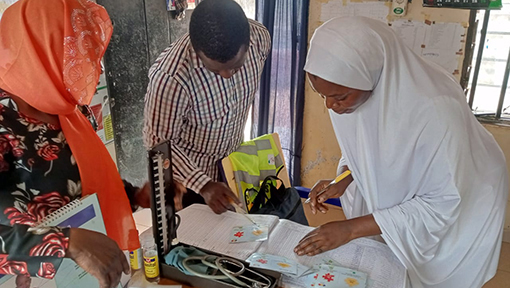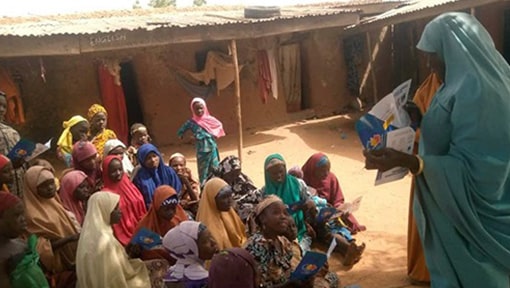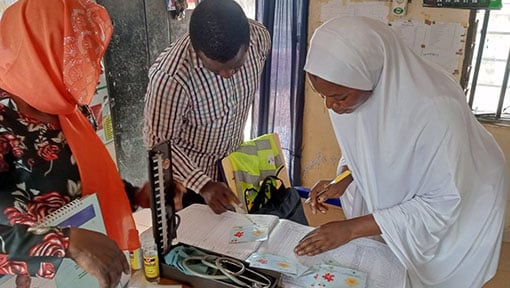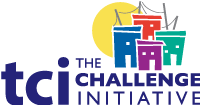Improving Family Planning Services in Vihiga County, Kenya, To Make an Impact on Teen Pregnancy Rate

Polycarp Okeyo is Deputy Director in Charge of Health Planning for Vihiga County.
When the government of Kenya launched a national campaign against teenage pregnancies, it chose to conduct the campaign’s launch event in Vihiga County. Polycarp Okeyo, Deputy Director in Charge of Health Planning for Vihiga, explained why the launch was so important to his county.
Approximately 1.5 percent of women who attended antenatal clinics between January and March 2020 were adolescents aged between 10 and 15. By the end of 2020, we had recorded about 15,000 pregnancy cases, with 155 of them being adolescents aged 10 to 14 years.”
According to recent local media reports, young girls that are pregnant or raising children are failing to sit for their final examinations, which affects their education, health and other opportunities. Polycarp shared:
Teen pregnancy presents social and health problems with many dropping out of school leading to early marriages. This further exacerbates the ‘triple threat’ of increased HIV infection, gender violence and an increase in teen pregnancy.”
When The Challenge Initiative (TCI) began collaborating with the county in 2019, reducing teen pregnancy was at the top of the agenda. TCI learnings enabled the county to establish a Technical Working Group (TWG) to support advocacy at all levels of the health system. Polycarp noted:
We learned a lot from our counterparts in Migori County who came to support us during the program design process. One particularly intriguing aspect was the level of community engagement, which included other sectors of governance.”
The TWG included representatives from various government departments, including education, gender, health, administration and coordination. It is hoped that with such involvement, the county will be able to reduce the various factors that exacerbate the teenage pregnancy trend. Polycarp explained:
Each sector of government has some understanding of the challenges that exist, as well as potential solutions. This is due to their strong connections with the communities with which they work.”
The county was able to hold sensitization meetings for these sectors thanks to TCI’s assistance. Some of them even took part in community dialogues and whole-site orientations, where they were given basic family planning information. Coaching was also provided to health care providers to improve their capacity to provide counseling and quality services.
Given the County’s progress, TCI interventions such as integrated family planning outreaches and in-reaches were incorporated into the draft County Adolescent and Youth Health Action Plan. Once implemented, this five-year policy will strengthen reproductive health interventions for young people. Polycarp shared:
As we progressed, the health providers’ capacity improved, and we were also coaching others using the Sisi kwa Sisi approach. One significant advantage of this approach was the transfer of skills based on identified need rather than investing in programs that may or may not address existing gaps. This creates a mechanism through which health intervention implementation becomes more sustainable.”
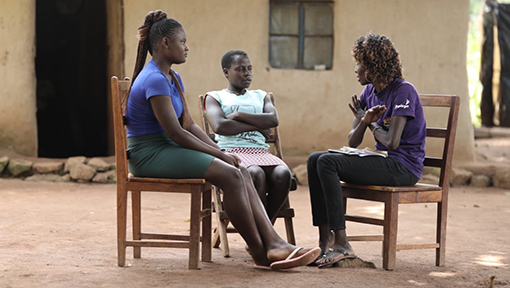
A community health volunteer sharing information on reproductive health services for young people during a household visit.
The county has been able to commit resources incrementally to TCIs’ high-impact interventions. For example, since the collaboration with TCI began, allocations have increased to over $13,000 USD, with an expenditure rate of approximately 75%.
Before TCI, as a County we did not have any budget allocation to reproductive health activities for youth and adolescents. Through the Domestic Resource Mobilization approach, as a County we have been able to source for funds and implement the interventions.”
The County also signed the Community Health Volunteer (CHV) Amendment Bill into law in early June 2022. This legislation provides a budget for engaging CHVs as well as a monthly stipend for them. According to Polycarp:
TCI concentrated on the entire health-care system. It was critical to employ community health workers. They are the ones who are familiar with the households. This makes it easier for them to reach them.”
Program results show that during the course of the implementation, community health workers have reached about 116,289 women of reproductive age with family planning services and information. Polycarp added:
It is now up to us to identify the incentives and policies that will allow us to sustain what we have accomplished. We want to see growth in our communities.”
Partnerships that encourage and support mindset shifts are required to drive health programs. Because such partnerships work directly with community leaders and local partners, their greatest strength, particularly socially, would be the potential to ensure equitable foundations for health systems. For coordinated multi-sectoral engagement and service delivery, the county health department’s five-year AYSRH action plan outlines specific priority objectives and responsibilities of all stakeholders and partners. Another win was the inclusion of TCI’s interventions such as integrated family planning outreaches. Polycarp said:
TCI taught us to own our health programs, and other partners, such as Nutritional International, are now adapting TCI’s financing model. We are co-financing the intervention’s implementation. It was simpler; we simply took TCI’s learnings and implemented the program step by step.”

